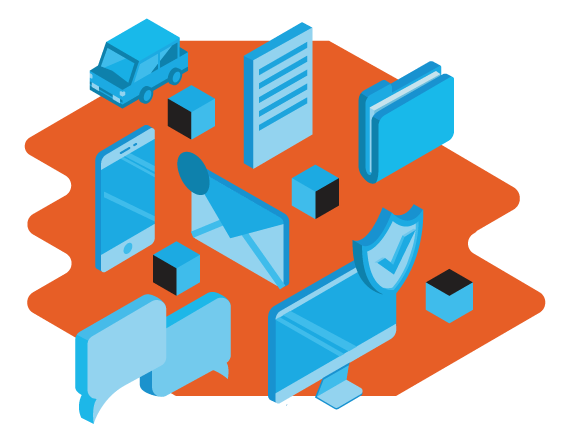Managing Retail & Manufacturing Risks
As a manufacturing and retail business, you are challenged daily with various risks where traditional markets and business models are constantly becoming obsolete. Though oftentimes technology is the culprit of these changes, it can also be a great tool to manage and prevent risks.
Manufacturers must start managing risks in an analytical and agile way while inserting risk management practices at every level of their business and using tech to help prevent unconventional threats.
1. Cyber risks
As cloud services and new tech advancements are on the rise, so too are new challenges and opportunities.
- By utilizing predictive modeling and advanced analytics, a manufacturer can gain insight and direction in dealing with massive data. Clouds can deliver IT solutions that don’t require expensive hardware, software, and infrastructure.
- At the same time, the risk of cyberattacks has also significantly increased. Because of this, manufacturers should ensure they have measures to protect all of their data privacy and the ability to respond to losses quickly.
- There is no one-size-fits-all insurance solution when it comes to covering cyber risks as it does not cause physical damage but rather reputational and financial losses of great magnitude. The level of said coverage can vary depending on a business’ needs and type of business.
- Policies usually include 3rd party liability coverage for damages due to data loss, response and remediation expenses (fines and penalties), income loss, financial penalties resulting from errors and omissions, and threats to intellectual property.
2. Product Safety
Product safety should always come first.
- When thinking about product safety, business owners must take into account current legislation affecting it and any regulatory requirements.
- A product recall can cause a business potentially damaging effects, such as bad publicity. Reputational damage can quickly spread across social media, and even with the most diligent risk assessments, it is hard to predict and ease all threats.
- Business owners can manage these potential types of crises by ensuring their products and labeling meet the federal requirements.
- In addition, businesses should ensure they have an appropriate post-crisis corporate public response plan in place and that all levels of the business are aware of it.

3. Location
- Manufacturing plants also pose specific risks in regard to their location. For example, a business’ location may force it to outsource production elements to capitalize on local conditions and raw ingredients. This, however, raises fresh challenges that should be addressed in any risk assessment.
- Business owners must have sufficient employer liability insurance or EPLI to cover such potential risks.
- In addition, if a business’ location is open to the public, it must have public liability insurance.
4. Equipment breakdown
Product liability insurance will offer manufacturers the essential protection they need in the case their product causes injury or damage to property or person. One of the most disruptive threats comes from a breakdown within a plant. It is important to note that a standard commercial property policy does not cover:
- Loss or damage from electrical arcing/ short circuit
- Boiler or pressurized vessel explosion
- Computer and communication equipment breakdown
- Mechanical breakdowns of plant or fixtures
Conclusion
Manufacturing and retail businesses need to make sure they are covering all of their bases when it comes to their insurance needs, taking into account all of the aforementioned factors that could cause great risks and damage to your brand and business. Most importantly, equipment breakdown insurance is a must, in the case that you have to cover the cost of replacing or repairing damaged equipment. It also covers the costs necessary to get your production and business back to normal as fast as possible after an incident. This type of coverage can be purchased as a standalone policy or an endorsement of your commercial policy.

